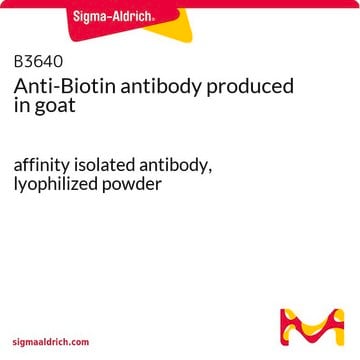General description
Chlamydia trachomatis is a Gram-negative bacterium that is responsible to sexually transmitted diseases leading to pelvic inflammatory disease, ectopic pregnancy, infertility, and outbreaks of trachoma-associated blindness and lymphogranuloma venereum (LGV). Chlamydia trachomatis consists of eighteen different serological variants (serovars) that include a few subvariants. These are identified based on serological reactivity of the epitopes on their outer membrane. Intracellularly chlamydia replicates within a vacuole. Chlamydia infection is initiated with the expression of a chlamydial early gene product(s), which isolate the inclusion from the endocytic-lysosomal pathway and makes it fusogenic with sphingomyelin-containing exocytic vesicles. This change in vesicular interaction allows the delivery of the vacuole to the peri-Golgi region of the host cell. Antigens from all members of the Chlamydia genus display heat resistance and sensitivity to oxidation by sodium periodate. Lipopolysaccharides (LPS) of Chlamydia consists of at least three antigen domains, two of which are shared by the LPS of certain other gram-negative organisms and one that is unique only to chlamydial LPS. It has been reported that the quantitative yields of chlamydial LPS can be achieved when elementary bodies (EBs) are first reduced and alkylated prior to extraction with hot phenol-water. (Ref.: Caldwell, HD., and Hitchcock, PJ. (1984). Infect. Immun. (44(2); 306-314; Scidmore, MA., et al. (1996). Infect. Immun. 64(12); 5366-5372; Turingan, RS et al. (2017). PLoS ONE 12(5): e0178653).
Specificity
Clone EVH-H1 detects lipopolysaccharide from Chlamydia genus.
Immunogen
Formalin-killed elementary bodies of the Chlamydia trachomatis L2 serovar.
Application
Anti-Chlamydial LPS, clone EVI-H1, Cat. No. MABF2107, is a mouse monoclonal antibody that detects Chlamydial lipopolysaccharide (LPS) and has been tested for use in Electron Microscopy, Immunocytochemistry, Immunofluorescence, and Western Blotting.
Immunofluorescence Analysis: A representative lot detected Chlamydial LPS in Immunofluorescence applications (Su, H., et. al. (2000). Infect Immun. 68(1):192-6; Wolf, K., et. al. (2001). Infect Immun. 69(5):3082-91).
Immunocytochemistry Analysis: A representative lot detected Chlamydial LPS in Immunocytochemistry applications (Wolf, K., et. al. (2001). Infect Immun. 69(5):3082-91).
Electron Microscopy Analysis: A representative lot detected Chlamydial LPS with Trasnsmission Electron Microscopy applications (Wolf, K., et. al. (2001). Infect Immun. 69(5):3082-91).
Research Category
Inflammation & Immunology
Quality
Evaluated by Western Blotting in HeLa cells infected with chlamydia trachomatis serovar L2 (LGV 434 L2).
Western Blotting Analysis: 2 µg/mL of this antibody detected Chlamydial LPS in HeLa cells infected with chlamydia trachomatis serovar L2 (LGV 434 L2).
Target description
~15 kDa observed. Uncharacterized bands may be observed in some lysate(s).
Physical form
Format: Purified
Protein G purified
Purified mouse monoclonal antibody IgG2a in buffer containing 0.1 M Tris-Glycine (pH 7.4), 150 mM NaCl with 0.05% sodium azide.
Storage and Stability
Stable for 1 year at 2-8°C from date of receipt.
Other Notes
Concentration: Please refer to lot specific datasheet.
Disclaimer
Unless otherwise stated in our catalog or other company documentation accompanying the product(s), our products are intended for research use only and are not to be used for any other purpose, which includes but is not limited to, unauthorized commercial uses, in vitro diagnostic uses, ex vivo or in vivo therapeutic uses or any type of consumption or application to humans or animals.









